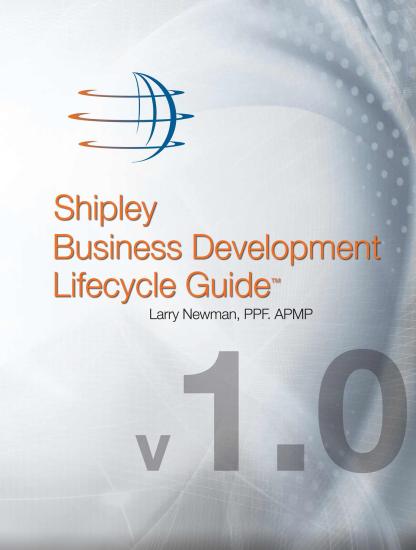
Rating: Not rated
Tags: Project Management, Lang:en
Summary
Organizations with effective business development
processes gain the following benefits:
The most successful organizations in any market or selling
environment innovate and improve framework processes based
upon fundamental principles. Less effective organizations
follow tightly defined processes, but limited understanding
of the fundamental principles reduces their flexibility to
adapt to market and customer shifts. The least effective
organizations lack consistent processes and fail to
understand fundamental principles. Help senior managers design a single, flexible, and
scalable business development process based on industry best
practices. Organizations with a single business development process
eliminate confusion about which process applies. If you have
multiple processes, individuals will repeatedly rationalize
why the more disciplined process does not apply to a given
opportunity. Business development managers that permit ad hoc
processes and rely on heroes for success are consistently
less successful. A flexible process can be adapted to different types of
selling environments, markets, opportunities, and customer
requirements. A scalable process can be adapted to differing sizes of
opportunities, schedules, resources, and budgets. As with our Proposal Guide and Capture Guide, these
guidelines are based upon fundamental principles of our
consulting practice:
Help individuals understand the business development
process. Whether highly experienced or new to business development,
individuals must use common vocabularies and definitions to
work effectively and efficiently as a team. Likewise, winning
complex, competitive opportunities requires a cohesive,
coordinated business development team working with a common
understanding of the work
This Business Development Lifecycle Guide is designed to
help individuals on your marketing, capture, and proposal
teams reach a common understanding of business development
process best practices and terms. These fundamental best
practices are readily applicable and adaptable when selling
to governments and businesses in
Individuals often use common terms with different implicit
meanings. Common terms are defined to support cohesive,
effective business development teams. Record best practices in a clear, linear order. At Shipley Associates, we have observed, studied, and
recommended business development best practices since 1972.
We endeavor to follow these principles in our consulting
practice, teach them in our training practice, apply them in
our business development process re-engineering practice, and
share them in our series of Guides. This Business Development Lifecycle Guide describes a
business development process comprising 96 steps divided into
seven phases. We urge business development professionals to
adapt, scale, and tailor this 96-step process to the types
and sizes of business opportunities encountered by their
organizations.
• Reduced costs and risks of capturing business
• Increased productivity and staff morale
• Improved sales forecasting
• Increased management visibility and control
• More competitive solutions and proposals
• Align your process to the customer’s
process.
• Use a disciplined business development process
that emphasizes planning.
• Schedule to the process and maintain schedule
discipline.
• Base your strategy and tactics on the
customer’s perspective.
• Maintain customer focus through every step.
• Use Decision Gate reviews to prompt senior
management to decide whether to advance the opportunity to
the next phase or end the pursuit.
• Use Color Team reviews to improve the quality
of the business development work product, whether an account
plan, pursuit plan, capture plan, strategy, solution, or
proposal.
process, individual roles, and required tasks.
domestic, international, and export markets; when
selling services and products; and in situations requiring
security clearances.